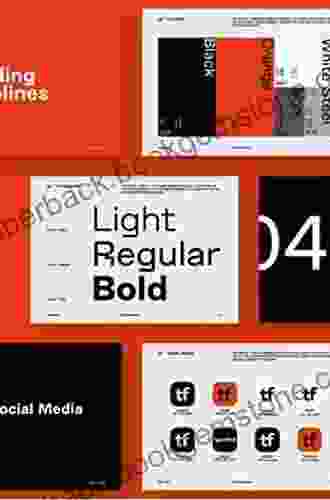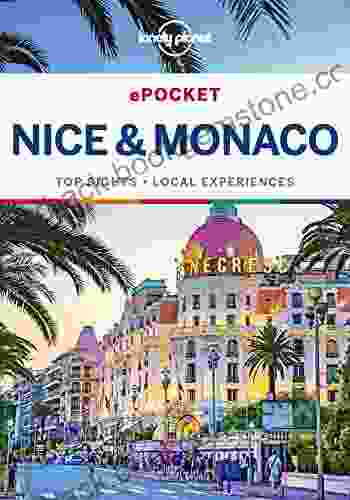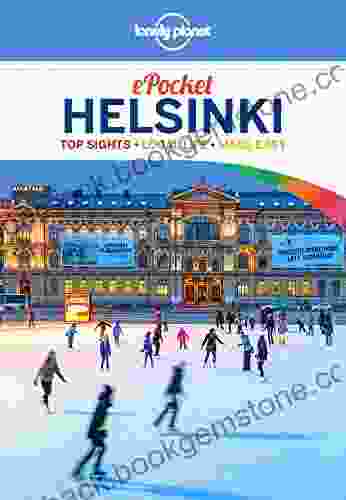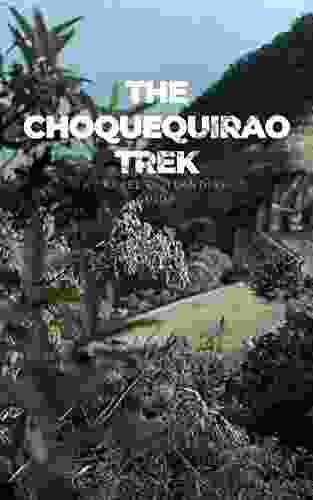Designing Letters From Their Source: A Journey Through the Origins and Inspiration Behind Our Alphabets

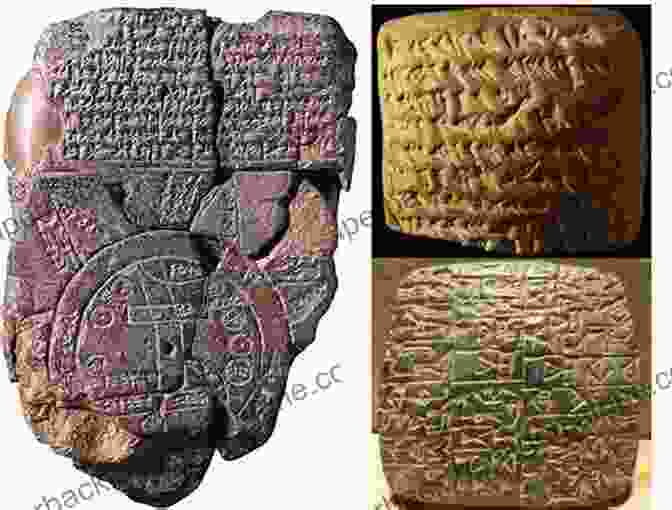
: The Genesis of Writing
The advent of writing marked a pivotal moment in human history, enabling the preservation and dissemination of knowledge and ideas. From the earliest pictograms to today's digital fonts, letters have evolved through a fascinating journey of creativity and ingenuity, reflecting the cultural, linguistic, and aesthetic sensibilities of different societies throughout time.
4.8 out of 5
| Language | : | English |
| File size | : | 14543 KB |
| Text-to-Speech | : | Enabled |
| Enhanced typesetting | : | Enabled |
| Print length | : | 224 pages |
| Screen Reader | : | Supported |
Part 1: Tracing the Origins of the Alphabet
Pictograms: The Visual Roots of Writing
The first known forms of writing, known as pictograms, emerged in ancient Mesopotamia and Egypt around 3500 BC. These symbols represented objects or ideas directly, relying on their pictorial resemblance to convey meaning. For instance, the ancient Egyptian hieroglyph for "sun" depicted a stylized circle with rays emanating from it.
Cuneiform: The Wedge-Shaped Script
Around 3000 BC, the Sumerians developed cuneiform, a wedge-shaped script that became the dominant writing system in the Middle East for centuries. Each sign represented a syllable or a word, with the combination of wedges allowing for a vast range of expressions.
Hieratic and Demotic: Evolving Egyptian Scripts
Concurrently with cuneiform, the ancient Egyptians developed their own script, known as hieratic. This cursive form of hieroglyphic writing was more efficient for administrative and literary purposes. Over time, it evolved into the demotic script, a simplified version used for everyday communication.
Part 2: The Birth of the Alphabetic System
The Phoenician Alphabet: The Foundation of Western Writing
In the 11th century BC, the Phoenicians, a seafaring people from the Levant, developed an alphabet consisting of 22 consonant letters. This groundbreaking system, known as the Phoenician alphabet, formed the basis for many subsequent alphabets, including the Greek, Hebrew, and Latin alphabets.
The Etruscan Alphabet: A Bridge to Latin
Around 800 BC, the Etruscans in Italy adopted and modified the Phoenician alphabet to create their own writing system. The Etruscan alphabet had 26 letters, including vocal elements, and eventually became the forerunner of the Latin alphabet.
The Greek Alphabet: The Foundation of European Civilization
In the 8th century BC, the Greeks borrowed the Etruscan alphabet and introduced innovations, adding vowel letters and modifying some characters. The Greek alphabet, with its 24 letters, became the foundation of Western civilization, giving rise to alphabets used in many European languages.
Part 3: Exploring the Diversity of Alphabets
Cyrillic Alphabet: The Slavic Script
In the 10th century AD, Saints Cyril and Methodius created the Cyrillic alphabet to facilitate the translation of religious texts for Slavic-speaking people. This alphabet, consisting of 44 letters, is still used in Russia, Ukraine, Bulgaria, and other Slavic countries.
Hangul: The Unique Korean Script
In the 15th century AD, King Sejong the Great of Korea devised a new writing system known as Hangul. Unlike most alphabets, Hangul is a syllabary, with each letter representing a syllable rather than a sound. This unique script is praised for its logical and efficient design.
Arabic Alphabet: The Language of the Quran
The Arabic alphabet, developed in the 4th century AD, is the principal writing system used for Arabic, Persian, Urdu, and other regional languages. It consists of 28 letters, with a unique calligraphic style that exhibits intricate rules for letter combinations.
: The Enduring Power of Letters
The journey of letterform design is a testament to the enduring power of human creativity and communication. From the earliest pictograms to the modern digital typefaces, letters continue to shape our world, connecting us across time, cultures, and languages. As we delve into the origins and inspiration behind our alphabets, we gain a profound appreciation for the ingenuity and artistry that has allowed us to preserve, share, and create countless stories, ideas, and expressions. And as writing evolves in the digital age, we can expect new and innovative forms of lettering to emerge, enriching our understanding of the written word and its role in shaping our collective human experience.
4.8 out of 5
| Language | : | English |
| File size | : | 14543 KB |
| Text-to-Speech | : | Enabled |
| Enhanced typesetting | : | Enabled |
| Print length | : | 224 pages |
| Screen Reader | : | Supported |
Do you want to contribute by writing guest posts on this blog?
Please contact us and send us a resume of previous articles that you have written.
 Best Book
Best Book Page Flip
Page Flip Bookshelf
Bookshelf Literary loom
Literary loom Chapter
Chapter Bookish
Bookish PageTurner
PageTurner Bibliophile
Bibliophile Story
Story Inkwell
Inkwell Bookworm
Bookworm Labyrinth
Labyrinth Plot Twist
Plot Twist Prose
Prose Paperback
Paperback Storyteller
Storyteller Sanctuary
Sanctuary Fiction
Fiction Reading
Reading Chronicle
Chronicle Read
Read Chris Roel
Chris Roel Larissa Pham
Larissa Pham Jack Finney
Jack Finney Susan Herrmann Loomis
Susan Herrmann Loomis Ian J Malone
Ian J Malone Margaret Kessler
Margaret Kessler Benjamin Hochman
Benjamin Hochman Paul Kendall
Paul Kendall Tim Powers
Tim Powers C J Boyle
C J Boyle Jules Verne
Jules Verne Dan Dietz
Dan Dietz Kerry Bogert
Kerry Bogert Seymour Morris Jr
Seymour Morris Jr Lynne Olson
Lynne Olson D L Harrison
D L Harrison Bonny Pierce Lhotka
Bonny Pierce Lhotka David Byrne
David Byrne Joanne Hutchinson
Joanne Hutchinson Denis Dutton
Denis Dutton Clifford D Simak
Clifford D Simak Bette Howland
Bette Howland Joseph Heywood
Joseph Heywood Stephen Mills
Stephen Mills Paul S Leland
Paul S Leland B V Larson
B V Larson Barbara Totaro
Barbara Totaro Ruth Silvestre
Ruth Silvestre Barry Moser
Barry Moser Emily Spivack
Emily Spivack Elisabeth Stevens
Elisabeth Stevens Benjamin Drake
Benjamin Drake Lonely Planet
Lonely Planet Esmeralda Santiago
Esmeralda Santiago Micah Ian Wright
Micah Ian Wright Bill H Myers
Bill H Myers Conn Iggulden
Conn Iggulden Brian Burke
Brian Burke James Ulyatt
James Ulyatt Bley Hack
Bley Hack S L Rowland
S L Rowland Ottessa Moshfegh
Ottessa Moshfegh Nelson Demille
Nelson Demille Nolan Clark
Nolan Clark Ian Chilvers
Ian Chilvers Bernth Lindfors
Bernth Lindfors Silvia Marina Arrom
Silvia Marina Arrom Norman Lee
Norman Lee Pam Flowers
Pam Flowers Sarah Birnbach
Sarah Birnbach Orestes Lorenzo
Orestes Lorenzo Koloman Moser
Koloman Moser Jenna Fischer
Jenna Fischer Ben Corbett
Ben Corbett Joseph Doddridge
Joseph Doddridge Zora O Neill
Zora O Neill Charlie Jane Anders
Charlie Jane Anders Simon Turney
Simon Turney Harvey Arden
Harvey Arden Robert E Hampson
Robert E Hampson Betty Dooley Awbrey
Betty Dooley Awbrey Lauren Meisner
Lauren Meisner John Scarne
John Scarne Mary Lou Andre
Mary Lou Andre Gabrielle Hamilton
Gabrielle Hamilton Bandana Ojha
Bandana Ojha Blair Howard
Blair Howard Jay Armstrong
Jay Armstrong Lena Corwin
Lena Corwin Grace Berry
Grace Berry Helmut Kopka
Helmut Kopka Ilan Stavans
Ilan Stavans Jpinsiders
Jpinsiders Philip B Meggs
Philip B Meggs Nefertiti Austin
Nefertiti Austin Steve Ryfle
Steve Ryfle Terry Pratchett
Terry Pratchett Ulysses S Grant
Ulysses S Grant Vanessa Zoltan
Vanessa Zoltan Michael Wise
Michael Wise Jacinda Townsend
Jacinda Townsend Josephine B Pasquarello
Josephine B Pasquarello Wayne Larsen
Wayne Larsen John H Vanderpoel
John H Vanderpoel Tershia Lambrechts
Tershia Lambrechts Umm Zakiyyah
Umm Zakiyyah James Haddock
James Haddock Shing Schih
Shing Schih James Joyce
James Joyce Momoyo Nishimura
Momoyo Nishimura Kristen Dutkiewicz
Kristen Dutkiewicz Benjamin John Coleman
Benjamin John Coleman Deirdre Slattery
Deirdre Slattery Mike Curato
Mike Curato Jennifer Wilson
Jennifer Wilson Bob Normand
Bob Normand Beverly Jenkins
Beverly Jenkins Nathalie Kalbach
Nathalie Kalbach George Schindler
George Schindler Lesley Downer
Lesley Downer Sejal Shah
Sejal Shah Jamie Davis
Jamie Davis Bella Blair
Bella Blair Ruth Superhal
Ruth Superhal Tim Rangnow
Tim Rangnow Peter Inglis
Peter Inglis Barbara Lewis
Barbara Lewis Milind Mulick
Milind Mulick Lynne Anne Blom
Lynne Anne Blom Tom Wiener
Tom Wiener Betsy Prioleau
Betsy Prioleau Gerri Leen
Gerri Leen Zongyan Hu
Zongyan Hu Michael J Hayde
Michael J Hayde David Airey
David Airey Robert Muirhead
Robert Muirhead Betty Halbreich
Betty Halbreich Mateo Askaripour
Mateo Askaripour Dan Moren
Dan Moren Ken Browar
Ken Browar Jeremy Dronfield
Jeremy Dronfield David Fisher
David Fisher Talia Hibbert
Talia Hibbert John E Siers
John E Siers Matthew Brehm
Matthew Brehm Bob Martin
Bob Martin Sarah Mirk
Sarah Mirk Mario Rizzi
Mario Rizzi Ben J Harris
Ben J Harris Jane L Rosen
Jane L Rosen Theo Farrington
Theo Farrington Leo Buijs
Leo Buijs Collins Dictionaries
Collins Dictionaries Deborah Forman
Deborah Forman Tim Stokes
Tim Stokes William A Kappele
William A Kappele Olive Yong
Olive Yong Yahrah St John
Yahrah St John Barbara Raue
Barbara Raue Greg O Brien
Greg O Brien Marty Noble
Marty Noble Sergio Toppi
Sergio Toppi Steve Berry
Steve Berry Marie Beardmore
Marie Beardmore Ben Strand
Ben Strand James Grady
James Grady Barry Herniman
Barry Herniman Cornelius C Kubler
Cornelius C Kubler Mary Matsuda Gruenewald
Mary Matsuda Gruenewald Chad Zunker
Chad Zunker Barack Obama
Barack Obama John Seed
John Seed Bob Dow
Bob Dow Hayao Miyazaki
Hayao Miyazaki Richard Sorger
Richard Sorger Michael Haag
Michael Haag Bill Winner
Bill Winner Jonathan Strahan
Jonathan Strahan Suzette Riddick
Suzette Riddick Ben D Over
Ben D Over Phoebe Robinson
Phoebe Robinson Colin Falconer
Colin Falconer Bebe Harper
Bebe Harper John Ruskin
John Ruskin J C Sum
J C Sum Daniel Rachel
Daniel Rachel Marie Killilea
Marie Killilea Gavin Maxwell
Gavin Maxwell Briana Wiles
Briana Wiles Barry Lord
Barry Lord Matt Smith
Matt Smith Joan Reardon
Joan Reardon Laura Ling
Laura Ling Eddie Chambers
Eddie Chambers Maurice Samuels
Maurice Samuels Bac Hoai Tran
Bac Hoai Tran Bev Sellars
Bev Sellars Barbara A Parish
Barbara A Parish Staci Swider
Staci Swider Theda Perdue
Theda Perdue Justin Woolley
Justin Woolley Toni Ann Johnson
Toni Ann Johnson Ea Hooper
Ea Hooper Malala Yousafzai
Malala Yousafzai Robert Crais
Robert Crais Becky Chambers
Becky Chambers Tom Wilson
Tom Wilson Bobby Brown
Bobby Brown Eric Henze
Eric Henze Laurent Bolard
Laurent Bolard Ibl Press
Ibl Press Tessa Miller
Tessa Miller Lucy Jane Bledsoe
Lucy Jane Bledsoe Michael Chatfield
Michael Chatfield Ian Mcdonald
Ian Mcdonald Beebe Bahrami
Beebe Bahrami Russell Foureagles
Russell Foureagles Behrouz Boochani
Behrouz Boochani Lowell Angell
Lowell Angell J Dominique
J Dominique D A Miller
D A Miller Bill Bryson
Bill Bryson Jenny Mckay
Jenny Mckay Ros Per
Ros Per Lucinda Fleeson
Lucinda Fleeson Barbara Casey
Barbara Casey Maura Spiegel
Maura Spiegel Jennifer Sewing
Jennifer Sewing Darrel Rees
Darrel Rees Yvonne Blackwood
Yvonne Blackwood Jason Sperb
Jason Sperb Christopher Butler
Christopher Butler Jon Contino
Jon Contino Phillip Maisel
Phillip Maisel Laney Salisbury
Laney Salisbury Paula Kamen
Paula Kamen Michael Shaara
Michael Shaara Iris Murdoch
Iris Murdoch Boris Mihailovic
Boris Mihailovic Charlise Lyles
Charlise Lyles Mariana Atencio
Mariana Atencio Billie Rae Bates
Billie Rae Bates Catherine Ryan Hyde
Catherine Ryan Hyde Stuart Williams
Stuart Williams Jonathan C Slaght
Jonathan C Slaght David E Lowe
David E Lowe Bich Minh Nguyen
Bich Minh Nguyen Ebony Diamonds
Ebony Diamonds Zachary Leader
Zachary Leader Benjamin E Wise
Benjamin E Wise Joan Williams
Joan Williams Eva Tulene Watt
Eva Tulene Watt David Elliot Cohen
David Elliot Cohen Barbara Chase Riboud
Barbara Chase Riboud Maggie Craft
Maggie Craft Joseph M Henninger
Joseph M Henninger Shanora Williams
Shanora Williams Dean A Kowalski
Dean A Kowalski Robin Cormack
Robin Cormack Ella Frances Sanders
Ella Frances Sanders Blakely Little
Blakely Little Jennie Smallenbroek
Jennie Smallenbroek Shirtaloon
Shirtaloon Tiana Laveen
Tiana Laveen Bob Elliott
Bob Elliott Stanislaw Lem
Stanislaw Lem Betsy Whyte
Betsy Whyte Diane Duane
Diane Duane Bill Arnott
Bill Arnott Robert Morkot
Robert Morkot Mackenzie Phillips
Mackenzie Phillips Stephen Boss
Stephen Boss Stewart M Green
Stewart M Green Barbara Davis
Barbara Davis Matthew Luzi
Matthew Luzi Claude Lanzmann
Claude Lanzmann Blaise Corvin
Blaise Corvin Debbie Rose Myers
Debbie Rose Myers Ravyn Wilde
Ravyn Wilde Tiana Bighorse
Tiana Bighorse Lucee Joie
Lucee Joie George Lopez
George Lopez Barry Sonnenfeld
Barry Sonnenfeld Barbara Miller
Barbara Miller Bayard Taylor
Bayard Taylor Gary Wasserman
Gary Wasserman Poppy Evans
Poppy Evans Hope Hart
Hope Hart Beryl Markham
Beryl Markham Sophie Cunningham
Sophie Cunningham Jordan Marie
Jordan Marie Barbara Hambly
Barbara Hambly Sheila Montilla
Sheila Montilla Elaine A Clark
Elaine A Clark Beau Riffenburgh
Beau Riffenburgh Eric Rauchway
Eric Rauchway Loring M Danforth
Loring M Danforth Kolbie Blume
Kolbie Blume Paraluman S Aspillera
Paraluman S Aspillera Tyler Perry
Tyler Perry George H Gisser
George H Gisser Sara Boccaccini Meadows
Sara Boccaccini Meadows Barbara Grizzuti Harrison
Barbara Grizzuti Harrison Kayla Arora
Kayla Arora Ben Hannam
Ben Hannam Edward Gibbon
Edward Gibbon Wendy Tait
Wendy Tait Laura Furman
Laura Furman Gillian Gloyer
Gillian Gloyer Lisa Congdon
Lisa Congdon Baby Professor
Baby Professor Lorraine De Meaux
Lorraine De Meaux Charles A Perrone
Charles A Perrone John Howard Griffin
John Howard Griffin Laurie Gough
Laurie Gough Maxime J Durand
Maxime J Durand Sophia Rolle
Sophia Rolle Mary Brave Bird
Mary Brave Bird Terry Compton
Terry Compton Barbara Delinsky
Barbara Delinsky Bruce Hanington
Bruce Hanington Charlotte Fiell
Charlotte Fiell Eliot Greenspan
Eliot Greenspan Philip Ball
Philip Ball Elena Gorokhova
Elena Gorokhova Doug Risner
Doug Risner Hal Erickson
Hal Erickson Mitche Graf
Mitche Graf Bj Wane
Bj Wane Jan V White
Jan V White Bernice Lerner
Bernice Lerner Bill Cotter
Bill Cotter Roman Mars
Roman Mars Ashley Jaquavis
Ashley Jaquavis Louis Wain
Louis Wain Stephen C Baldwin
Stephen C Baldwin Saul Tanpepper
Saul Tanpepper Shane Mitchell
Shane Mitchell Noel Riley Fitch
Noel Riley Fitch Lori Wilde
Lori Wilde Beatrice Sonders
Beatrice Sonders Bella Young
Bella Young Linda Lael Miller
Linda Lael Miller Jessica Marting
Jessica Marting Jamie Carter
Jamie Carter Diane Gensler
Diane Gensler Barney Nelson
Barney Nelson William Alexander
William Alexander Michael Winter
Michael Winter Bernice L Mcfadden
Bernice L Mcfadden Rebecca Sugar
Rebecca Sugar Bill Lee
Bill Lee Harmon Cooper
Harmon Cooper Fania E Davis
Fania E Davis Saxon Andrew
Saxon Andrew Steven Campbell
Steven Campbell Brad Bussie
Brad Bussie Ellen Tomaszewski
Ellen Tomaszewski Bill Bensley
Bill Bensley Tove Ditlevsen
Tove Ditlevsen Bob Dennard
Bob Dennard Jane Pek
Jane Pek Stuart D Paine
Stuart D Paine Philip Guston
Philip Guston Dana Fox
Dana Fox Blake Farha
Blake Farha Bet Borgeson
Bet Borgeson Diane Tuckman
Diane Tuckman Khadijah J
Khadijah J Baoshu
Baoshu Ruby Dixon
Ruby Dixon Carol Sulcoski
Carol Sulcoski Barrington Barber
Barrington Barber Matthew J Milliner
Matthew J Milliner Barbie Scott
Barbie Scott Becky Gilhespie
Becky Gilhespie Bethany C Morrow
Bethany C Morrow Joseph Lanza
Joseph Lanza C Pierce Salguero
C Pierce Salguero Faye Kellerman
Faye Kellerman Richard L Leza Sr
Richard L Leza Sr Stephanie Claytor
Stephanie Claytor Ben Eastham
Ben Eastham Robert Henderson
Robert Henderson Tony Horwitz
Tony Horwitz Florencia E Mallon
Florencia E Mallon Keith Doyle
Keith Doyle Brandon Varnell
Brandon Varnell Jessie Knadler
Jessie Knadler Bengie Molina
Bengie Molina Thomas S Hischak
Thomas S Hischak Mark Crilley
Mark Crilley Douglas Brooke Wheelton Sladen
Douglas Brooke Wheelton Sladen Tim Rayborn
Tim Rayborn Bart King
Bart King Yoshitaka Amano
Yoshitaka Amano Valerie L Winslow
Valerie L Winslow Kevin Hart
Kevin Hart Sandra Duran Wilson
Sandra Duran Wilson Helen Thorpe
Helen Thorpe Taylor Jenkins Reid
Taylor Jenkins Reid Jodi Staniunas Hopper
Jodi Staniunas Hopper Barry Kirwan
Barry Kirwan Bob Herbert
Bob Herbert Bob Drury
Bob Drury David V Jervis
David V Jervis Tya Marie
Tya Marie Dalili
Dalili F Scott Fitzgerald
F Scott Fitzgerald Betsy Beier
Betsy Beier Wesley Jones
Wesley Jones Erica Davies
Erica Davies Stephen Haff
Stephen Haff Basil Johnston
Basil Johnston Spencer Shaw
Spencer Shaw Elissa Washuta
Elissa Washuta Ceidrik Heward
Ceidrik Heward James S A Corey
James S A Corey Hillary Jordan
Hillary Jordan Bassey Ikpi
Bassey Ikpi Rainer Maria Rilke
Rainer Maria Rilke Katie Dowe
Katie Dowe Michael Anderle
Michael Anderle Shoko Tendo
Shoko Tendo Edward White
Edward White Birgit O Connor
Birgit O Connor Robert Lanz
Robert Lanz Monica Walters
Monica Walters Matthew Morgante
Matthew Morgante Gabrielle Euvino
Gabrielle Euvino John G Breslin
John G Breslin Dave Hill
Dave Hill William Black
William Black Thomas P Stafford
Thomas P Stafford Glynn Stewart
Glynn Stewart Mary Peters
Mary Peters Alan O Brien
Alan O Brien Michael Mammay
Michael Mammay Kao Kalia Yang
Kao Kalia Yang Steve Huston
Steve Huston Kyle Froman
Kyle Froman Tom Sito
Tom Sito Melissa Rivers
Melissa Rivers Sarah Hepola
Sarah Hepola James Goddard
James Goddard Interweave Editors
Interweave Editors Becky Stephen
Becky Stephen Ernst Rettelbusch
Ernst Rettelbusch Benjamin Lewin
Benjamin Lewin Deanne Stillman
Deanne Stillman Peter Ustinov
Peter Ustinov Dennis E Taylor
Dennis E Taylor Noret Flood
Noret Flood Bob Leszczak
Bob Leszczak Wayne Moniz
Wayne Moniz Wilkie Collins
Wilkie Collins Bonnie Barker
Bonnie Barker Charles Sturt
Charles Sturt Rexford Govorchin
Rexford Govorchin Wassily Kandinsky
Wassily Kandinsky Barbara Demick
Barbara Demick Jonathan Waterman
Jonathan Waterman Helen Hoang
Helen Hoang Keith Houston
Keith Houston William Lidwell
William Lidwell Nick Petrie
Nick Petrie Lexi Sundell
Lexi Sundell Hildegarde Mahoney
Hildegarde Mahoney Ian Nathan
Ian Nathan Tori Rodriguez
Tori Rodriguez Benj Pasek
Benj Pasek Nikki Turner
Nikki Turner Bella Martin
Bella Martin Lucy Adlington
Lucy Adlington Marvin Patchen
Marvin Patchen Beverly J Armento
Beverly J Armento Bonny Snowdon
Bonny Snowdon Mark Tufo
Mark Tufo John Mulholland
John Mulholland Donald N Thompson
Donald N Thompson Linda Nochlin
Linda Nochlin Hakeem M Oluseyi
Hakeem M Oluseyi Marina Warner
Marina Warner Tim W Jackson
Tim W Jackson Basilius Besler
Basilius Besler Chris Nashawaty
Chris Nashawaty John Muir
John Muir Chevonne Clarke Bryan
Chevonne Clarke Bryan Kathy Mckeon
Kathy Mckeon Betsy Dillard Stroud
Betsy Dillard Stroud Samuel Peralta
Samuel Peralta Barbara Bradley
Barbara Bradley Maggie Ramsay
Maggie Ramsay Rita Benn
Rita Benn Leon Smith
Leon Smith Rosemary Kimani
Rosemary Kimani Ben Box
Ben Box Dave Hickey
Dave Hickey Yiyun Li
Yiyun Li Kenya Hunt
Kenya Hunt Robert Roskind
Robert Roskind Sir Richard Francis Burton
Sir Richard Francis Burton J P Telotte
J P Telotte Leanne Kitchen
Leanne Kitchen Billie Holiday
Billie Holiday Bianca Del Rio
Bianca Del Rio Individual Way
Individual Way Ben Street
Ben Street Elisabeth Elliot
Elisabeth Elliot Dean Koontz
Dean Koontz Patrick Symmes
Patrick Symmes Beth Tondreau
Beth Tondreau Tammy Ruggles
Tammy Ruggles Fiona Peart
Fiona Peart Veda Austin
Veda Austin Brad Lee
Brad Lee Bill Plympton
Bill Plympton Tracey Lange
Tracey Lange Partha Mitter
Partha Mitter Katja Petrowskaja
Katja Petrowskaja Rohan M Vider
Rohan M Vider Terry Lee Stone
Terry Lee Stone Terese Marie Mailhot
Terese Marie Mailhot Brad Taylor
Brad Taylor Tony Burton
Tony Burton Ben Coes
Ben Coes Nancy Kress
Nancy Kress Brent Eviston
Brent Eviston Greg Mitchell
Greg Mitchell Eric Gibson
Eric Gibson Dori Jones Yang
Dori Jones Yang Bolu Babalola
Bolu Babalola Carol Huber Cypher
Carol Huber Cypher Ben Shahn
Ben Shahn Michael Doyle
Michael Doyle William Ellis
William Ellis Jonathan Lopez
Jonathan Lopez Patricia Sands
Patricia Sands Bil Donovan
Bil Donovan Merl Code
Merl Code
Light bulbAdvertise smarter! Our strategic ad space ensures maximum exposure. Reserve your spot today!
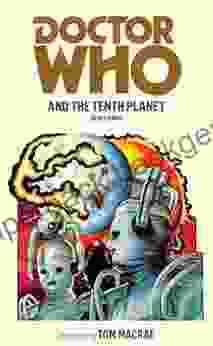
 Jerome BlairDoctor Who and The Tenth Planet: A Comprehensive Examination of the Series'...
Jerome BlairDoctor Who and The Tenth Planet: A Comprehensive Examination of the Series'... Timothy WardFollow ·10.5k
Timothy WardFollow ·10.5k Edmund HayesFollow ·6.9k
Edmund HayesFollow ·6.9k John Dos PassosFollow ·14.4k
John Dos PassosFollow ·14.4k Herbert CoxFollow ·4.2k
Herbert CoxFollow ·4.2k Virginia WoolfFollow ·19.3k
Virginia WoolfFollow ·19.3k Adrian WardFollow ·8.7k
Adrian WardFollow ·8.7k Joseph ConradFollow ·16.4k
Joseph ConradFollow ·16.4k Eddie PowellFollow ·8.8k
Eddie PowellFollow ·8.8k
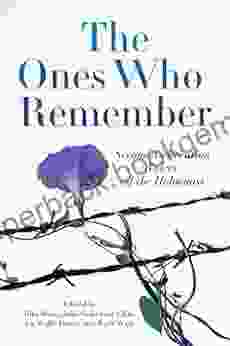
 Bryan Gray
Bryan GrayThe Second Generation: Voices of the Holocaust
The Holocaust was one of the most horrific...

 Douglas Foster
Douglas FosterWalking the Fields of the Newfoundland Dead
In the heart of the rolling countryside of...
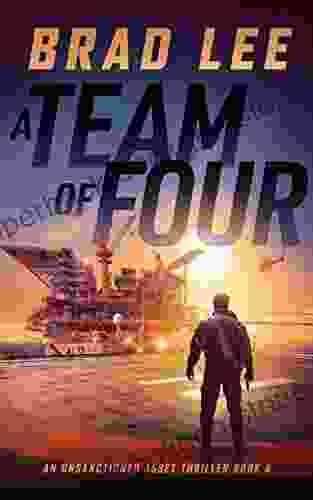
 Henry James
Henry JamesThe Unsanctioned Asset: A Gripping Thriller Set in a...
In the realm of espionage thrillers, The...
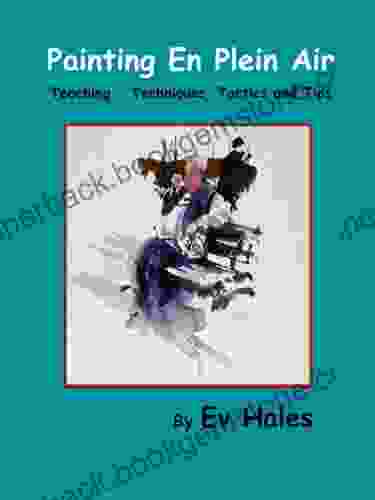
 Devon Mitchell
Devon MitchellPainting En Plein Air: Capturing the Essence of Nature on...
Painting en plein air, or painting...

 Damon Hayes
Damon HayesThe Life and Times of Dene Residential School Survivor
Residential schools...
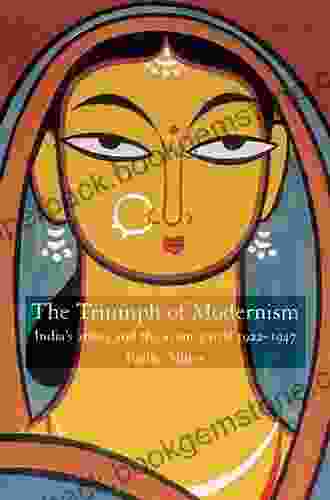
 Steve Carter
Steve CarterIndia Artists and the Avant Garde: 1922-1947
The term "avant-garde" is...
4.8 out of 5
| Language | : | English |
| File size | : | 14543 KB |
| Text-to-Speech | : | Enabled |
| Enhanced typesetting | : | Enabled |
| Print length | : | 224 pages |
| Screen Reader | : | Supported |


